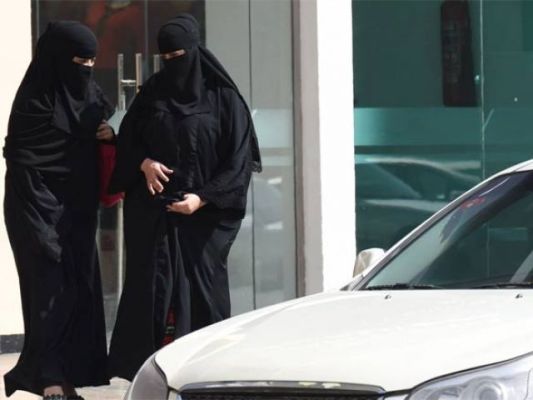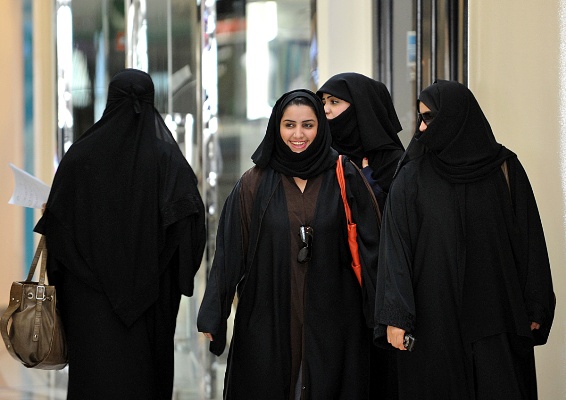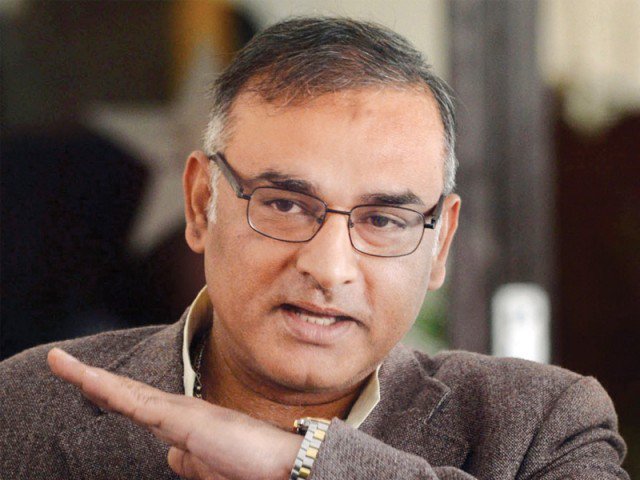
6 things Saudi Arabia and Iran have in common
Instead of bickering, the duo should realise that they are merely two sides of the same coin.
Saudi Arabia’s long and bitter history with Iran came to a boiling point recently when the Kingdom murdered Shi’ite cleric Sheikh Nimr al-Nimr on charges of treason after a farcical trial. For some time, the Saudis had indirectly indicated that Nimr al-Nimr was on Iran’s payroll. The late preacher, a fierce critic of the monarchy, ridiculed these claims.
Although Nimr al-Nimr was a Saudi national, Iran strongly condemned the execution. Later, a Saudi embassy in Tehran was vandalised by Persians angrier than the ones defied by 300 Spartans. That Iran reacted so strongly did nothing to disprove any Nimr al-Nimr conspiracies hatched by the Saudis.
Recently, Pakistan tried to mediate talks between Iran and Saudi Arabia to no avail. The new Saudi-Iran crisis has now spilled over to other nations in the region and has the potential to grow more volatile.
A solution:
I personally think that these two countries, torn by sectarian divide, need to only discuss their similarities to realise how much common ground they share. One minute they will be arguing fiercely and the other they shall be embracing until Iran has had enough, but Saudi Arabia refuses to let go, at which point Iran would say,
“Ya akhi, we are similar, but not that similar.”
Here are five things Saudi Arabia and Iran have in common… though perhaps not that common.
1. They both have strict guidelines on modesty:
In Saudi Arabia, women are to wear a full loose cloak called the abaya, and are expected to cover the heads as well. These rules are strictly enforced by the Muttawas (religious police) who patrol the streets, enforcing their laws with stern words and sticks.
How Saudi women are usually dressed on the streets:
 Photo: AFP
Photo: AFPIn 2016, more women in the Kingdom, especially expatriates, are rebelling by leaving their faces open:
 Photo: AFP
Photo: AFPLife is a little better in Iran. At the Imam Khomeini International Airport in Tehran, a sign says,
“Respected Ladies: Please Observe Islamic Dress Code.”
Officially, this is interpreted as either a full chador or a loose fitting outfit called the manteau. Depending on the city, Iranian women, much like their counterparts in Saudi Arabia, are fighting to stretch the rules. Of course, the local police are fighting back in this tug of war. In late 2015, a Tehran court fined women for not wearing the hijab properly by letting their hair show.
Today, more and more women are letting their head covers fall loose as an act of defiance.
 Photo: Youtube
Photo: YoutubeI have a feeling that if the respective religious policemen from these two nations were to sit down over a cup of tea and discuss how their women were defying them, they would not only find it therapeutic, but a means to increase brotherly love,
“Your women hate you… our women hate us… we have so much in common!”
2. They both have terrible human rights records
Saudi Arabia’s record on human rights would leave even the ‘Bastard of Bolton’, Ramsay Snow, blushing. At the start of 2016, the Kingdom executed 47 people in a day, setting some sort of a sick record as if they believed they were competing against Islamic State of Iraq and Syria (ISIS) and Iran in the executions category at the Olympics.
 Photo: Reuters
Photo: ReutersHuman Rights Watch (HRW) has long maintained that Saudi Arabia’s criminal justice system is unfair. A disproportionate number of those executed are blue collar expatriate workers such as maids, accused of sexual crimes or murder. Many victims claim they were either fighting back against a sexually depraved employer, or that they were framed for another’s actions.
When the Saudis aren’t beheading, they are delivering lashings. The world was mortified when activist Raif Badawi was sentenced to 1000 lashes. Perhaps one of the most atrocious cases was when a 13-year-old school girl was sentenced to 90 lashes and two months in prison for getting involved in an altercation with her teacher.
Iran, on the other hand, clearly also believes that they are fighting for gold in the execution Olympics. In 2015, the nation is said to have executed a shocking 1084 people. Amnesty International reports that of those, 694 were killed in the latter half of the year.
“While Amnesty International opposes the use of the death penalty unconditionally and in all cases, death sentences in Iran are particularly disturbing because they are invariably imposed by courts that are completely lacking in independence and impartiality. They are imposed either for vaguely worded or overly broad offences, or acts that should not be criminalised at all, let alone attract the death penalty. Trials in Iran are deeply flawed, detainees are often denied access to lawyers in the investigative stage, and there are inadequate procedures for appeal, pardon and commutation.”
According to The Washington Free Beacon, those executed are from minority groups ‘such as Christian converts, Bahá’í adherents, Sunni Muslims, and Kurds’.
Meanwhile, targets of the Iranian justice system also happen to be political dissidents.
Freebeacon.com,
“Iran also remains one of the few nations to execute children and minors, as well as women claiming self-defense against rapists and homosexuals.”
Clearly, the justice systems in Iran and Saudi Arabia are less about ‘justice’ and more about silencing voices.
3. They both export their versions of Islam
Using their wealth, the Saudis have spread their hard-line version of Islam called Wahhabism, to countries such as Pakistan, India, Bangladesh, Afghanistan, and others.
As The Week reports, Saudi’s do so partially out of fear:
“To combat the spread of Shiite Islam and ensure that the Islamic world is primarily Sunni. In recent years, the ancient Sunni-Shiite conflict in Iraq, Yemen, and throughout the Middle East has grown more overt, bitter, and violent. Now that Iran has agreed to rein in its nuclear program in return for the lifting of international economic sanctions, Riyadh fears a newly enriched Tehran will be more aggressive in spreading its Shiite doctrine and promoting Shiite-led revolutions. A trove of Saudi diplomatic documents covering 2010 to 2015, recently released by WikiLeaks, shows a Saudi obsession with Iranian actions and Iranian influence. Saudi government agencies monitor Iranian cultural and religious activities, and try to muzzle Shiite influence by shutting down or blocking access to Iranian-backed media. Saudi diplomats keep close tabs on Iranian involvement everywhere, from Tajikistan, which has strong historical Persian ties, to China, where the tiny, beleaguered Uighur population — which is Muslim — is growing more religious. [Saudis promote their religious views by] investing heavily in building mosques, madrasas, schools, and Sunni cultural centres across the Muslim world. Indian intelligence says that in India alone, from 2011 to 2013, some 25,000 Saudi clerics arrived bearing more than $250 million to build mosques and universities and hold seminars.”
Saudi Arabia’s ideology may have indirectly fuelled the rise of ISIS. Now, like a master under assault from the very attack dog it trained, the Kingdom is desperately trying to combat the militant group.
As NPR reports, Iran too tried to export their views,
“Khomeini did not envisage himself as making a revolution in one country,” says Juan Cole, professor of Middle East history at the University of Michigan. “His ideology of clerical rule, rejection of the Western colonial heritage, he felt was a universal message.”
Khomeini put forward the claim that he was the leader of the entire Muslim world, not simply of Shiite Iran.
That message was not well received among the Sunni Muslim rulers of the Middle East.”
Saudi Arabia:
“Our version of Islam is correct.”
Iran:
“No, our version of Islam is correct.”
God:
“Oh, shut up, both of you.”
4. They both have been accused of playing games
The Middle East and its surrounding regions continue to pay with massive body counts thanks in part to the proxy wars led by Iran and Saudi Arabia. Syria and Yemen are two of the bloodiest examples today. But how complex is this chess board? French cartographer Emmanuel Pène’s beautifully illustrated map for the Maghreb and Orient Courier elaborates further:

Iran:
“Hey, Saudi Arabia, what is your favourite TV show?”
Saudi Arabia:
“Game of Thrones, of course.”
Iran:
“Oh my god, mine too!”
5. They both hate homosexuals
Both Saudi Arabia and Iran have clamped down hard on homosexuality. For its part, Saudi Arabia has objected to Lesbian, Gay, Bisexual, and Transgender (LGBT) rights being a part of UN’s Global Goals, raids the frequent ‘gay parties’ held by the growingly bold homosexual community in the Kingdom, and has also taken action against gay marriages.
International Business Times,
“Homosexuality is illegal under Saudi Arabia’s strict interpretation of Islamic Shariah law, which holds that any married man found engaging in homosexual acts can be stoned to death. Other punishments for those found guilty of homosexuality include imprisonment, flogging, chemical castration and execution.
A court in Saudi Arabia’s eastern port city of Dammam sentenced a man in November to three years in prison and a fine of 100,000 Saudi riyals (about $26,000) for allegedly engaging in “immoral acts.” In July, a 24-year-old man in the city of Medina was sentenced to three years in jail and 450 lashes after a court found him guilty of “promoting the vice and practice of homosexuality.”
Surprisingly, Saudi Arabia is an influential member of the United Nations Human Rights Council.
Though as The Guardian reports, the Saudis aren’t as vicious as Iran,
“In contrast to Iran, though, there have been no ‘gay’ executions reported in Saudi Arabia since 2002 when three men from Abha were beheaded. There have, however, been various raids on gay parties and men have been arrested for ‘behaving like women’ but the usual penalties are flogging and imprisonment – which tend to attract less media attention than executions.”
Breitbart,
“Gay activists estimate that some 4,000 alleged gays have been executed by Iran since its 1979 Islamic Revolution. Most victims of capital punishment are executed via hanging. When public executions are conducted, the victim is usually hung in the air off of a crane.”
 Photo: Twitter
Photo: TwitterIn 2014, The Washington Free Beacon reports, Iran executed two men for homosexuality,
“The head of Iran’s judiciary department in the northern city of Rasht announced on Sunday that two homosexual men had been executed for “perversion,” which is considered a severe crime under Iran’s hard-line Islamic law.”
Saudi Arabia:
“Homosexuality is a disease!”
Iran:
“Shut up and kiss me.”
Saudi Arabia:
“What?”
Iran:
“What?”
6. They both suck at football
Growing up in Saudi Arabia, I saw the young shirtless men of the Kingdom partake in one sweaty close-quarters activity more than any other.
Yes, football.
Call it Stockholm syndrome, but I always supported the Saudi team whenever there was a game on TV. They are obviously passionate about the sport; any victory is met with mad jubilation on the streets. Sadly, the team has produced a string of embarrassing performances at the World Cup.
Their best came in the 1994, when a skilful display from Saeed Al-Owairan against Belgium produced one of the greatest World Cup goals of all time.
Certainly, we were talking about it at school.
Unfortunately, the team has only regressed in spite of the countless hours of practice and considerable wealth spent on their training. In 2002, I buried my head in my hands when Germany handed them a massive 8 – 0 defeat. This was after I had made special arrangements to watch the game in Canada.
Similarly, Iran has produced some terrible World Cup performances though recently have overtaken Saudis as a better team. While both nations have only qualified four times, Iran has had more recent appearances. And head-to-head, Iran has a marginally better record than Saudi Arabia.
Perhaps if Iran and Saudi Arabia concentrated less on the game of sectarian conflict, they’d be better at the most beautiful game. Instead of bickering, the duo should realise that they are merely two sides of the same coin.




COMMENTS (29)
Comments are moderated and generally will be posted if they are on-topic and not abusive.
For more information, please see our Comments FAQ